’I can now afford to make works that are not for sale’: Ben Quilty on making art for himself
As hype builds ahead of another retrospective exhibition, the artist can be found creating new work for an audience of one. This is art as therapy, as Ben Quilty deals with the demons of the physical abuse he suffered as a schoolboy.
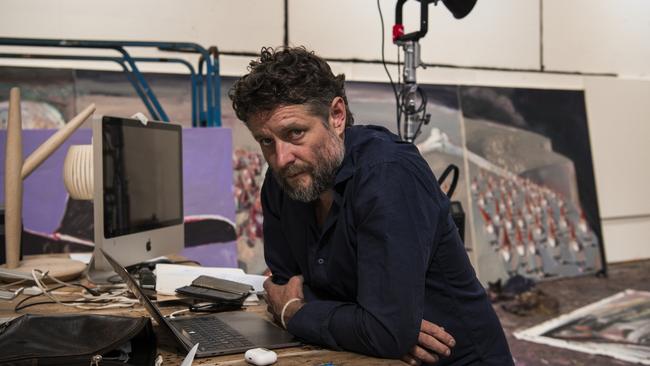
To wander into Ben Quilty’s studios is quite an overwhelming sensory experience. The row of two-storey semi-industrial units in the NSW Southern Highlands, painted an unappealing apple green trimmed in aubergine (nothing to do with Quilty, I expect), doesn’t look like much from the outside. But step inside the long, cavernous space and the eye darts around, struggling to settle, taking in the riotously colourful paint-spattered floor of his studio where some of his most well known artworks rest or hang alongside other enormous half-finished canvases and drafts, one dominating an entire wall. An adjacent room is used entirely for custom framing, with yet more instantly recognisable Quilty works leaning against walls and on work benches. Even the walls of the large bathroom in this former gym have been seconded to hang paintings, the exception being a cheeky roll of toilet paper strung up on a coathanger, each sheet of which features an image of Donald Trump’s head, lips puckered as if to offer the user a kiss.
The family’s Huntaway sheepdog puppy, named Dave (a female – but Quilty always wanted a dog called Dave) barks happily as she plays with a pair of his old paint-flecked work boots. We settle in for coffee and fresh pastries he has thoughtfully provided, ready to dive into the past five years – a period in which this usually prolific artist has been rather quiet.
Quilty is warm, relaxed, genuine, candid and occasionally outspoken. Nothing is off-limits and the conversation ambles from his childhood in Sydney’s semirural northwest to the devastating physical abuse he suffered his first year in high school at the hands of a teacher; his recent joy at becoming the plus-one at writers festivals for his wife Kylie Needham, author of Girl in a Pink Dress; and his new body of work, a radical departure from anything he’s done to date, the result of an epiphany he had after reaching the big five-oh.
First up, though, is the matter of Quilty’s decision to sell the family jewels, or some of them anyway. The reason so many of his canvases are dotted about the studio is that they are about to be couriered to Brisbane for a new solo exhibition, his first in five years. Ben Quilty: 20 Years celebrates two decades with Jan Murphy, his gallerist, friend and occasional “bossy big sister” (her words). The paintings represent significant moments in Quilty’s ever-changing creative process, and his 20-year journey through life and love in all its ecstatic and occasionally devastating chapters. More than half have never been seen.
Quilty selected the works, loosely representing one for each year and some of them deeply personal. There are portraits of his family, including Baby Joe (2006), a playful oil painting of his newborn son who peers out of the canvas like a turtle hatchling; Kylie Asleep While I Draw Her, a loving homage to Needham from 2010; and a 2020 oil painting, this one a nude, titled Kylie, A Love Letter. (His 16-year-old daughter Olivia isn’t represented in this collection, but Quilty assures me she has featured in many). The exhibition includes mediums for which Quilty is not well known, such as porcelain sculpture – Conscript (Private Phil Butler), 2014 – as well as the instantly recognisable 2011 Archibald Prize-winning portrait of his dear friend and Australian national treasure, the late still-life painter Margaret Olley.
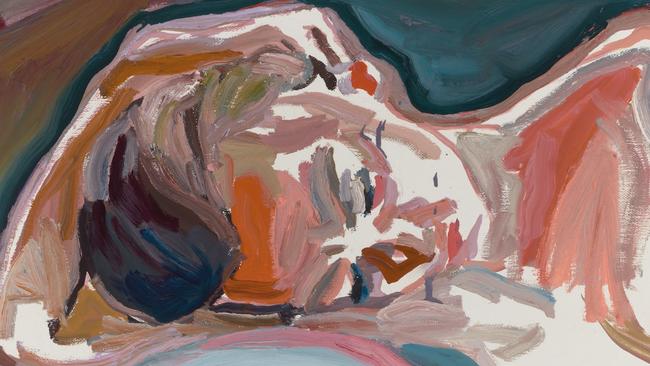
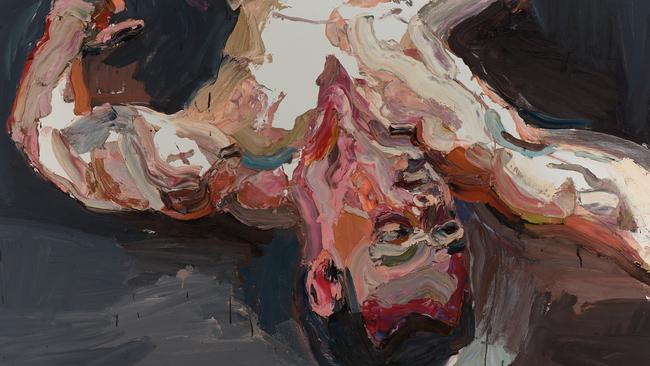
These works hail from Quilty’s private collection, but rather than a fire sale, it reflects the fact that he finally feels secure with his position in life and is ready to begin the next chapter, as we will discover.
“I always worried something would happen to me, and Kylie would be stuck with a home loan and two kids, so I was very aware I needed to sell exhibitions,” Quilty says. “I don’t have any super to rely on so I’ve kept lots of works she could use to pay bills. It’s only in the past couple of years, since turning 50, I’ve felt I’ve made enough to feel like I’ve done something … and I now feel I’m financially OK and can take much bigger risks with works I can afford to make, bigger project-based works that will be seen in years to come.”
Though now a household name, Quilty became a professional artist relatively late in life, and in a roundabout way. “Painting was always going to be a hobby – I loved it but it didn’t seem like a reasonable career,” he explains. He’d landed work experience at Channel 7 while finishing a degree in visual communications, design and women’s studies at the University of Western Sydney. In 1998, that became a full-time job editing raw film footage as it came in, putting together packages for the TV news, be it a car accident on the Hume Highway or a suicide bomber in the West Bank. “It was the most confronting footage, coming in live – natural disasters, war zones … it was really formative for me, very powerful,” says Quilty, whose 2002 painting Bomber (which is in the new exhibition) was a response to footage seared on his brain from that time.
It was also at Channel 7 that he met Needham, a screen writer, and they fell in love.
“I met Ben when I was 24. He was 26, still living at home with his parents and about to start work experience; he had no fashion sense and wore bad shirts,” Needham recalls with a laugh. “He was just really lovely and we got along very naturally. I’m prone to being a bit shy when I meet people but when I met Ben I felt I could talk to him really easily and we’ve maintained that for the 25 years we’ve been together. We have a very real understanding of who the other one is.”
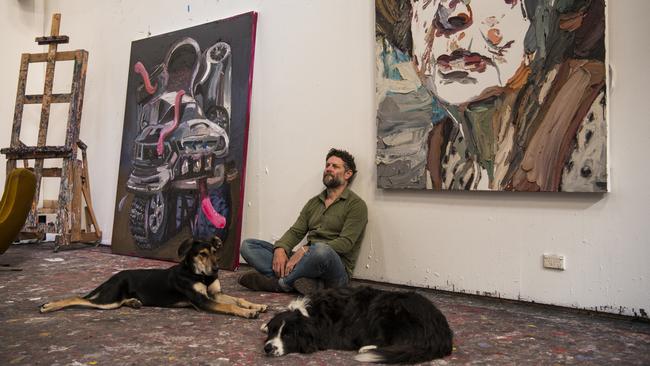
When Quilty travelled overseas for the first time it was with Needham to New York. It was another significant milestone in his life reflected through the two works which feature in 20 Years; the charcoal New York Study 2 and oil painting New York, both from 2000.
Life changed radically for Quilty when, in 2002, he entered the youth Brett Whiteley Travelling Art Scholarship for the fourth and final time, aged 29. He won. “It felt like my ticket to freedom, a ticket out of a day job. Six months in Paris, on scholarship,” he says.
Quilty’s entry had included both Bomber and a painting from his Torana series, whichhad emerged after studying Aboriginal culture and observing the powerful initiation rites young men went through; he despaired that Australian teens devised their own initiations to fill a cultural void, risking their own lives and those of others by driving fast, drunk or high – himself included.
Olley was a judge that year and the pair clicked immediately. “I hadn’t met many proper serious practising artists and she wasn’t the clichéd artist: she was gruff, she could be quite rude to people, direct. She smoked cigarettes in the foyer of the AGNSW! I had a pretty simplistic stereotype of what a still-life painter her age would be, and it wasn’t that,” Quilty smiles. Why was she drawn to him? “I worked really hard and I think she was attracted to any young people who worked hard.” Their friendship lasted until her death in 2011.
Quilty’s repeated requests for a sitting ultimately resulted in his Archibald Prize-winning portrait. “When I showed her the painting she got very emotional, quite teary, and said, ‘There’s the old bitch.’ It wasn’t what I expected her to say,” he recounts with a laugh, before demurring. “It was a real moment. She was a pretty humble human.”
Winning the Brett Whiteley scholarship signalled the beginning of Quilty’s life as a professional artist, and when Brisbane gallerist Jan Murphy came across one of his Torana pieces in 2004 she knew she had seen something special. “I didn’t really understand why anybody would want to paint a Torana but it was the most extraordinary little work and you could tell there was something very special about his mark-making,” Murphy says. “Then I met him and went to his studio and he was delightful, we just got along. He had a roomful of portraits of his friends he’d painted as budgerigars, a very personal exploration. In hindsight they were kind of kooky, but so beautifully painted, as is everything Ben does. We arranged to have a show later that year, Young and Free?, which was a huge success [it sold out] and everybody in Brisbane fell in love with him.” The pair have shown together ever since.
Also in the new exhibition is Trooper M, After Afghanistan2012. It was Murphy who’d taken the call from the curator of the Australian War Memorial inviting Quilty to travel to Afghanistan as Australia’s official war artist. She immediately felt sick. “I was scared for him, my friend, but I knew it was the right thing and I knew he’d want to go,” Murphy says. “It came at a very good time for him as a person and a painter because he was looking for something. He had no idea where it would take him – none of us did. None of us knew how big and emotional that journey would be.”
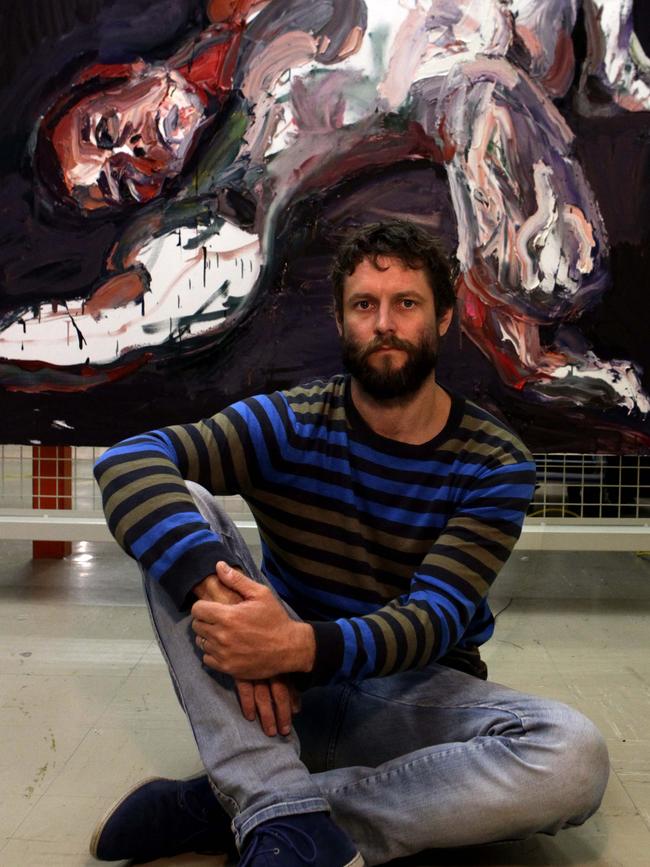
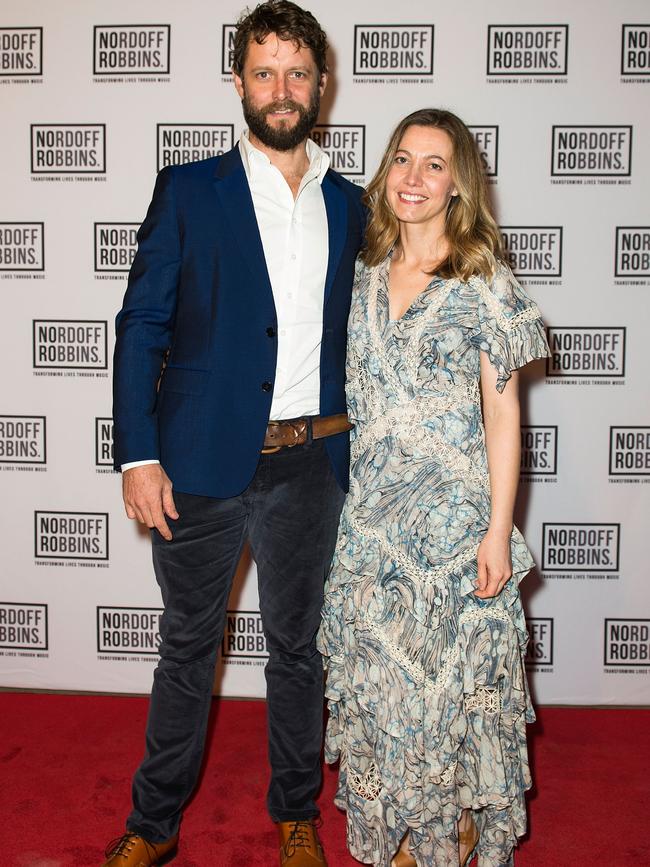
For one month in 2011 Quilty was embedded in Afghanistan with the Australian troops. It was a frightening time but the stories he heard will never leave him, and the subsequent body of work he created resulted in a public outpouring of emotion. The soldier depicted in Trooper M, After Afghanistan was suffering severe PTSD at the time; the portrait brilliantly captures his anguish. “He was so sick, physically destroyed. Now he’s super fit, healthy … he’s got on top of it and is such a success story,” Quilty says of his subject, who’s now a lawyer fighting for veterans’ rights.
Then there’s the pencil drawing Myuran 2012, also for sale. Quilty was back in the headlines in 2014 with his public fight for clemency for Myuran Sukumaran and Andrew Chan, who had been convicted of heroin trafficking as part of the 2005 “Bali Nine” gang and sentenced to death. Quilty had become close friends with Sukumaran when the latter took up painting in jail and contacted the artist for advice. Quilty’s campaign was ultimately unsuccessful, and Sukumaran and Chan were executed in 2015, but not before supporters including Kerry Stokes (a Quilty collector) had helped fund a vigil in Sydney’s Martin Place. Quilty suffered anxiety and nightmares in the lead-up to the execution. But that was “a small price to pay”, he says, “to be so privileged to witness people in that circumstance, whether it’s after Afghanistan or Myuran Sukumaran on death row.”
Needham says Quilty’s empathy might overwhelm him, were it not for the salvation of the studio. “He’s a very empathetic person – once he attaches himself to a cause it’s very real to him, and sometimes he can become quite overwhelmed by negative things,” she says. “So when he went to the Syrian refugee camp [in 2016] he became very distressed. Afghanistan, he was very disturbed by what he saw there, he takes all that on. That can be hard sometimes,” she says. “Painting for Ben is very therapeutic because he can take those thoughts outside himself and put them on a canvas then everyone can have a response. Without the painting I think he would be impossible to live with and I think it would be impossible for him to live with himself.”
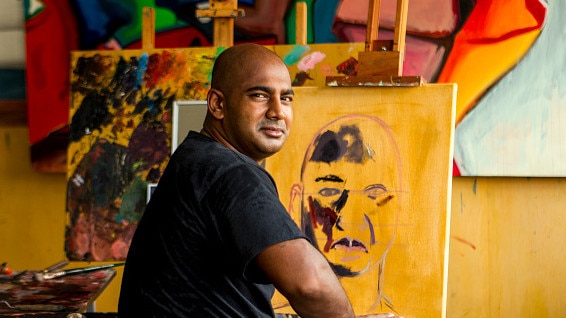
Quilty’s high-profile and public support of everything from the European refugee crisis (Heba’s Tiny Jacket, 2017) to Indigenous rights means he has his share of detractors, who criticise him for being an “issues-based artist”. Quilty is unapologetic. “I don’t know what I should do – should I just paint pretty pictures? I am asked all the time to engage in particular causes because people are desperate to bring attention to important things, but I can’t do it all.”
You can’t fault his commitment to the visual arts, a commitment that goes beyond his own studio practice to ensure the art world is better for everyone, artists and the public alike. For nine years he was a trustee of the Art Gallery of NSW, and his passionate belief that “every community deserves a library, a gallery and a music venue” drove him to fight for years for a state-of-the-art gallery for the NSW Southern Highlands. It ultimately happened in 2021; named Ngununggula (“Belonging” in the traditional language of the Gundungurra people), the $7.6 million project is situated at historic Retford Park in Bowral.
The new body of work Quilty is now busy creating is also deeply personal, fuelled by events and issues that have consumed him for years but which he never felt ready to tackle. These include a collaboration with a taxidermist in Melbourne and the wildlife rescue service WIRES, a comment on the destruction wreaked by feral and domestic cats; and a number of environment-focused paintings created on old canvases discovered in a junk shop by Arthur Streeton, an early environmentalist himself.
He is also building some sculptural works referencing the repeated floggings he received in Year 7 at the hands of a Catholic brother; one such beating perversely followed Quilty topping an English exam. “He gave me the strap for some crap about ‘With the good comes the bad.’ He flogged me and flogged me. He was a sadist. What a sad man to do that to a 12-year-old boy who was a good kid, who by Year 9 and 10 was then wildly out of control. But it made me who I am – I wouldn’t have become an artist if that year hadn’t happened, because by Year 12 I was determined never to do anything I didn’t want to do again.”
In response to that trauma Quilty is building a large sculpture from the very materials used to make the strap that beat him: leather and thin pieces of ply. “I’ve never made work about that, and it feels very liberating,” he says. “I think I felt it would be disrespectful to criticise that [school] system. I don’t know why. I think you’re so indoctrinated as a kid.”
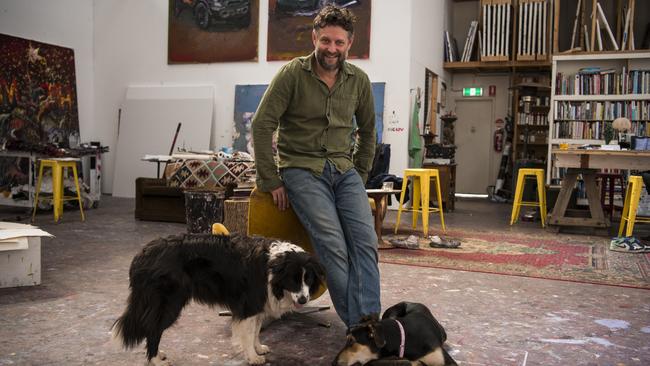
As we sit in his studio surrounded by so many famous Quilty works, Olley and a Torana among them, I ask if he anticipates finding buyers for these new, unconventional and sometimes deeply confronting pieces of art. “No way, not these things – there’s no place for them,” he says. “But that’s not why I’m making them. I can now afford to make works that are not for sale.”
At 51 Quilty is finally feeling secure enough, financially and creatively, to take his foot off the accelerator. In large part this is down to his critically acclaimed 2019 survey that toured the Art Gallery of South Australia, the Queensland Art Gallery and the Art Gallery of NSW. It was a major turning point for Quilty. “After that show it felt like a big release, an affirmation you’ve done something well, you’ve made work the audience has engaged with and the show did really well. I’ve gone into really new territory since then, and not shown most of the work I’ve made for the last five years.”
The works will end up in various exhibitions – some will be included in his next major state gallery survey, in 2027, while those that tackle our climate crisis are part of Recirculate, a group show at McGlade Gallery in Sydney. Others may not even be displayed publicly, and that’s OK too. Quilty points to a pencil marking high on the wall, way above our heads. “There’s a painting that goes to there with massive curtains, a huge proscenium arch, timber frame and a sculpture on top,” he explains. Such a massive work is “obviously not going into anyone’s home, no one’s going to buy it. It won’t go into Jan Murphy’s gallery”, he chuckles.
I later repeat this quote to Murphy; hearing that an artist’s new body of work has limited sale potential might cause a gallerist some angst, so I’m surprised by the response. “Having a gallery and working with an artist, you have to let an artist do this,” Murphy says. “I know this next body of work may not come back in financial terms but it will come back in some way. He’ll learn something – Ben is always learning, always pushing, always challenging himself. If he finishes something that looks great, he’ll destroy it so he can learn something from it. He’s never ridden on the back of a successful show, saying ‘I can sell budgies so I’ll paint budgies.’ He’s always moving.
“I consider myself incredibly lucky to have gone on this journey with him. Ben has a huge capacity for understanding human behaviour. Yes, he uses his art and place in the art world to effect change, where he can, because that’s his superpower. And that’s a beautiful thing.”
Ben Quilty: 20 Years is on at Jan Murphy Gallery in Brisbane until December 7.

To join the conversation, please log in. Don't have an account? Register
Join the conversation, you are commenting as Logout